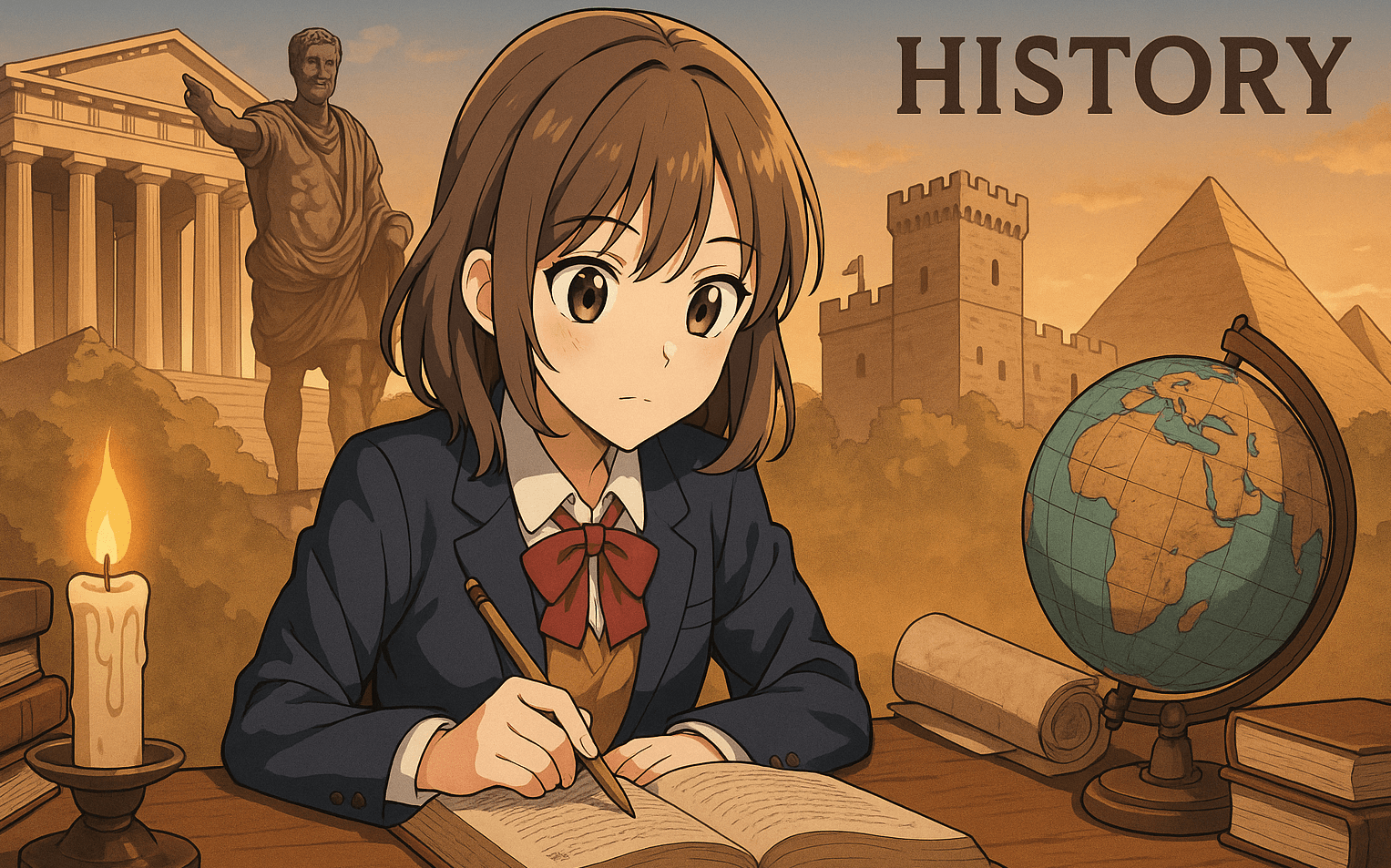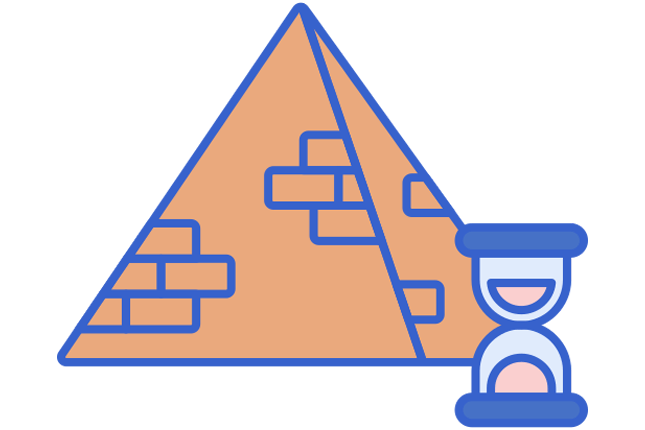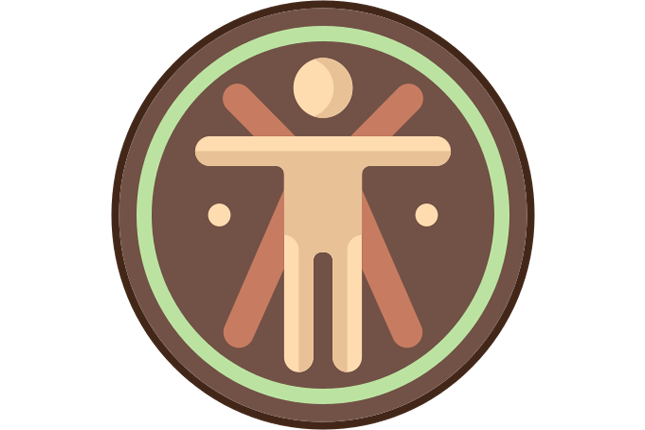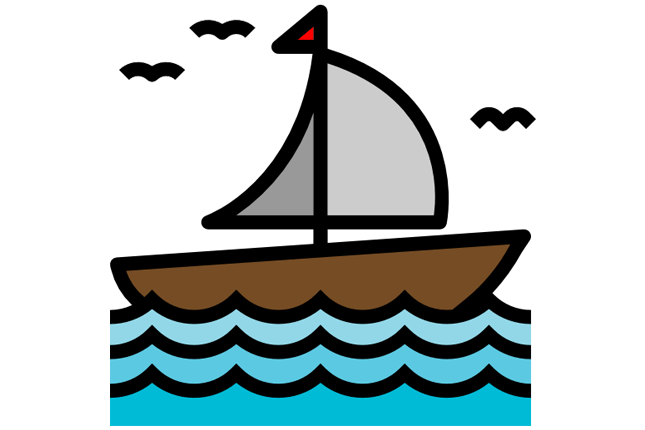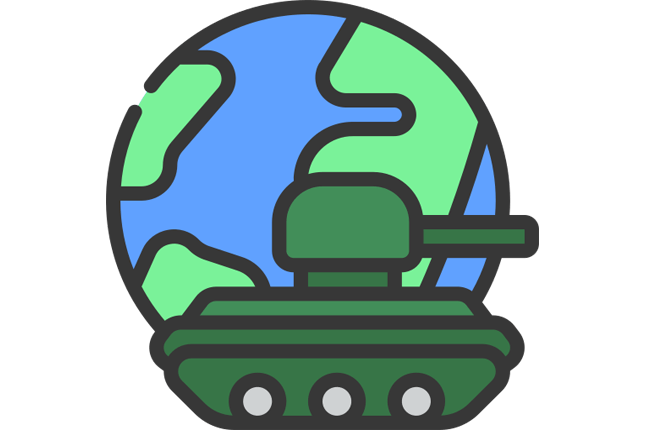Key Concepts in History
The Impact of History – From Ancient Civilizations to Modern Challenges
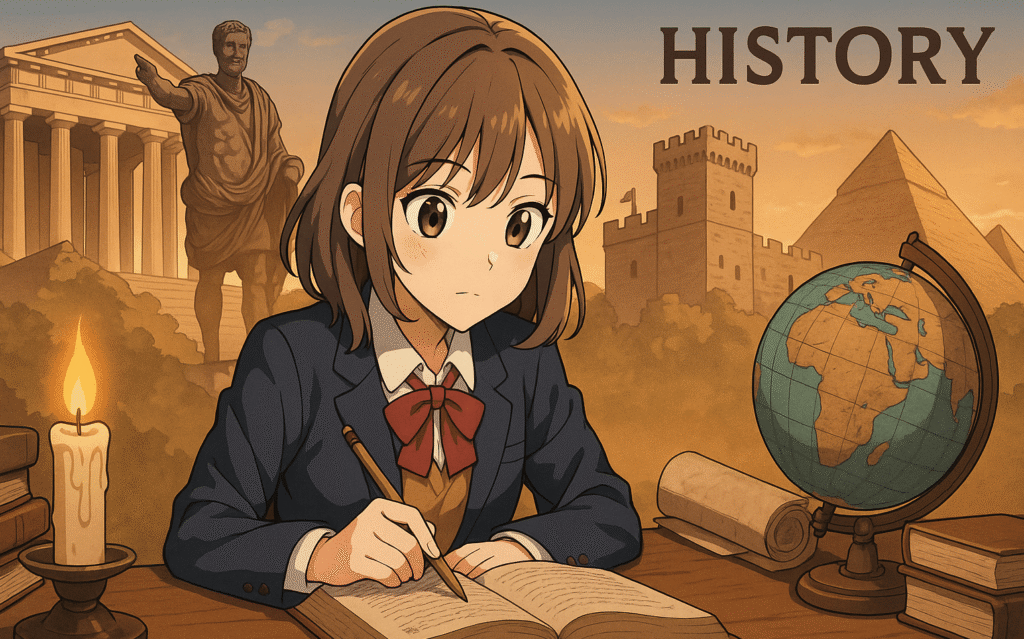
History provides a lens through which we can view the evolution of societies, technologies, and ideas over countless generations. It is not a mere collection of dates and events but rather an intricate tapestry of triumphs, conflicts, innovations, and cultural exchanges that continue to influence human affairs. By examining the past, one gains clarity about contemporary institutions, social norms, and ongoing dilemmas. Below is a panoramic look at pivotal historical developments and the ways in which they have shaped diverse regions and cultures, ultimately offering perspective on how the lessons of bygone eras might guide the future.
Ancient Civilizations – The Cradle of Modern Society
The earliest civilizations emerged in regions that offered fertile land, steady water supplies, and strategic trading routes. As communities grew, they developed complex forms of governance, religious beliefs, and socio-economic structures that laid down norms for future eras. Many modern conventions, from laws to architectural design, can trace their origins to these early cultures, demonstrating the lasting impact of ancient innovations.
Ancient Egypt
The civilization nurtured by the Nile River stands as a prime example of early large-scale societal organization. Rulers known as Pharaohs exercised centralized authority, employing well-developed bureaucratic systems to mobilize labor for monumental construction projects and to manage the annual flood cycles. Egyptians innovated in fields such as mathematics, astronomy, and medicine, reflecting the intellectual sophistication of their society. Alongside these scientific strides, they cultivated a distinct spiritual identity marked by polytheistic beliefs and a strong emphasis on an afterlife, which influenced architectural achievements like the pyramids and elaborate burial practices.
Ancient Greece
Unlike the primarily centralized structure of Egyptian society, the Greek city-states favored varied political models ranging from oligarchies to the famed Athenian democracy. The concept of direct citizen participation in governance inspired subsequent experiments with representative systems around the globe. Equally transformative were the philosophical discourses of Socrates, Plato, and Aristotle, which laid down methods of rational inquiry that have influenced modern disciplines in science and the humanities. Greek dramatists introduced complex storytelling that still resonates in modern theater, while the original Olympic Games underscored an appreciation for both athletic excellence and peaceful competition, ideals that remain celebrated in modern sports culture.
Ancient Rome
Romans forged far-reaching administrative and engineering feats, drawing from earlier civilizations yet expanding them on an unprecedented scale. The Republic introduced systems allowing citizens to elect officials and participate in decision-making, a model that shaped constitutions of many modern nations. Roman law codified principles of justice, property rights, and contracts, some of which endure in present-day legal frameworks. The massive network of roads and aqueducts confirmed Rome’s command of large-scale engineering, ensuring connectivity across remote provinces and steady water delivery to urban centers. Even after the collapse of the Western Roman Empire, its influence persisted, transmitted through the Eastern Roman (Byzantine) Empire and reflected in evolving European political concepts.
The Medieval Era and Transformations Across Europe
Often labeled the Middle Ages, this lengthy period following the fall of the Western Roman Empire saw the emergence of feudal hierarchies, far-reaching religious influence, and social upheavals caused by calamities like the Black Death. Despite the label “Dark Ages” sometimes applied to the early medieval centuries, this era also nurtured new power structures, intercultural exchanges, and technological experiments that would inform future developments.
Feudalism
Governance took on a decentralized character, with local lords and vassals forging pacts for mutual defense in exchange for land rights. The arrangement upheld social stability but often confined peasants to subsistence agriculture on manorial lands, leaving little room for upward mobility. Over time, certain towns grew in influence, fostering artisan guilds and trade leagues. Even though the feudal hierarchy could be rigid, it laid the groundwork for a degree of economic specialization in local regions.
The Crusades
Christians from Western Europe ventured east to the Holy Land, spurred by religious fervor and the possibility of economic and territorial gain. These excursions facilitated contact between Islamic states, Byzantium, and Latin Europe, leading to the transfer of scientific ideas, philosophical works, and commercial products. The exposure to advanced Islamic mathematics, medicine, and philosophy ignited a broader curiosity that reverberated through medieval European intellectual circles. Although marked by violence and deep-rooted tension, the Crusades inadvertently sowed seeds for the cultural revival and maritime explorations that would emerge later.
The Black Death
The mid-14th century plague epidemic ravaged large swaths of Europe, removing an estimated one-third of its population and undermining existing socio-economic systems. Serfs, no longer bound to severely depleted estates, found new leverage in the labor market, demanding wages or relocating to more favorable regions. This realignment of power relationships unraveled medieval feudal constraints, allowing urban centers to expand and spurring the transformation of medieval society into a proto-modern framework.
Revival and Expansion during the Renaissance
The Renaissance signaled a renewed cultural vibrancy in Europe, particularly visible in art, literature, and scholarly pursuits. Intellectuals sought inspiration in classical texts, initiating a broad movement that championed individual potential and empirical inquiry. This era bridged the medieval mindset with an evolving modern sensibility.
Humanism, Artistic Mastery, and Literary Achievements
Renaissance humanists placed considerable value on worldly existence and the capacity of individuals to shape society through reason and creativity. This worldview manifested vividly in artistic endeavors. Leonardo da Vinci’s detailed anatomical sketches and paintings exhibit a scientific, observational approach; Michelangelo’s sculptures and frescoes highlight an admiration for human form, underscoring the era’s fascination with classical ideals. Parallelly, William Shakespeare’s prolific output refined theater and poetry, delving into universal themes like love, ambition, and mortality in ways that still resonate across cultures.
Scientific Curiosity and Revolutionary Theories
Greater openness to empirical research gave impetus to the Scientific Revolution. Nicolaus Copernicus proposed a heliocentric model, challenging geocentric traditions. Galileo Galilei championed experimentation and observation, which often brought him into conflict with ecclesiastical authorities. Such pioneers laid the foundations for Newton’s laws of motion and subsequent leaps in physics, astronomy, and mathematics. This strengthening of scientific thinking not only reshaped the natural philosophy of the time but also spawned a methodological approach that would guide fields as diverse as engineering, medicine, and navigation.
Religious Shifts and the Protestant Reformation
Martin Luther’s criticisms of certain Church practices unleashed a wave of reformist sentiment, culminating in the Protestant Reformation. Unrest spread rapidly through pamphlets and passionate sermons, splitting Christendom into multiple denominations. This fragmentation affected politics and society, as princely states and emerging nation-states aligned with either Catholic or Protestant factions. The period ushered in religious wars but also placed emphasis on personal faith and the reading of scriptures in vernacular languages, fostering broader literacy and shaping distinct cultural identities.
Age of Exploration and the Advent of Global Colonial Empires
Progress in seafaring technology, coupled with strategic ambitions, propelled European powers outward to discover and claim faraway lands. These voyages not only reshaped international commerce but also irrevocably transformed indigenous societies across the globe.
Driving Forces Behind the Age of Exploration
Navigators like Christopher Columbus, Vasco da Gama, and Ferdinand Magellan sought alternate trade routes to Asia’s lucrative spices and textiles. These expeditions uncovered new continents, promoting interchange of flora, fauna, and diseases in what historians term the Columbian Exchange. Items like potatoes, tomatoes, and maize traveled to the Old World, impacting European diets, while Old World livestock, wheat, and infectious diseases significantly disrupted indigenous populations in the Americas.
Colonization of the Americas and Its Consequences
The large-scale colonization led by Spain, Portugal, England, and France placed enormous pressure on native communities. Conquistadors leveraged superior weaponry, alliances, and pathogens to subdue civilizations such as the Aztecs and the Incas. Forced labor systems and resource extraction projects fundamentally altered local economies, spurring wealth accumulation in Europe but inflicting enduring harm on local cultures. The plantation model quickly emerged, depending on enslaved labor trafficked across the Atlantic, a stark practice that planted deep-rooted racial divisions still visible in modern society.
Atlantic Slave Trade and Its Legacy
The forced migration of millions from West Africa to plantations in the Caribbean, Brazil, and North America shaped global demographics and entrenched systems of inequality. Enslaved individuals, stripped of autonomy, generated massive profits in sugar, cotton, and tobacco markets. Entire regions in Africa lost significant segments of their populations, hindering long-term social and economic development. Though abolition movements eventually dismantled formal slavery, the aftermath continues to reverberate in the form of systemic racial disparities and cultural fragmentation.
The Enlightenment and Intellectual Catalysts of Modern Governance
Deepening skepticism toward absolute authority, combined with new philosophical explorations, ushered in sweeping ideals about human rights, social contracts, and the role of government. Enlightenment thought furnished a rhetorical and intellectual framework for revolutions that reshaped global politics.
Philosophical Shifts and Influential Minds
Prominent thinkers such as John Locke, Montesquieu, Voltaire, and Jean-Jacques Rousseau proposed radical notions about individual liberties, separation of powers, and the obligation of authorities to serve the governed. Their tracts circulated widely, fueling debates in coffeehouses, salons, and printing presses. Over time, these ideas sparked campaigns for religious tolerance, freedom of expression, and constraints on royal prerogatives.
American and French Revolutions
Colonists in North America drew on Enlightenment arguments to justify declaring independence from British rule, culminating in the American Revolution. The newly formed United States codified principles like checks and balances in its Constitution, influencing other nations’ governance structures. Meanwhile, France’s revolution dismantled centuries of monarchical rule, unleashing radical reforms in pursuit of liberty and equality. Although Napoleon Bonaparte’s ascension introduced a new authoritarian dimension, the revolution’s ideals reverberated worldwide, encouraging nationalist and liberal movements in Latin America and across Europe.
The Industrial Revolution and Socioeconomic Transformations
Technological innovations that began in Britain’s textile sector set off a wave of industrial changes that reverberated throughout Europe, North America, and eventually other parts of the globe. Factories replaced agrarian livelihoods, cityscapes ballooned, and class structures adapted to a rapidly mechanized world.
Key Technological Advancements
The steam engine stands as a signature invention of this period, freeing production sites from reliance on waterwheels or human muscle. Trains and steamships sped up communication and goods transport, shrinking geographical distances and intensifying global trade. Advances in metallurgy allowed for mass production of iron and steel, making robust machinery, rail lines, and architectural frameworks feasible on a large scale.
Urban Growth and Labor Challenges
Cities like Manchester, Birmingham, and later Detroit or Chicago, became magnets for rural migrants seeking factory work. While these areas brimmed with new opportunities, they also witnessed overcrowding, sanitation crises, and exploitation of laborers, including children. Over time, workers organized to demand fair wages and safer working conditions, giving birth to labor unions and catalyzing the formation of social policies. Governments in industrializing regions confronted new debates around public health, education, and the distribution of wealth.
Rise of Labor Movements
Industrial workers identified collective bargaining as a means to counterbalance the power of factory owners, leading to unionization. Prolonged struggles culminated in legislation that limited work hours, regulated child labor, and introduced safety mandates. These reforms expanded the concept of civic responsibilities and social welfare, preparing the ground for modern states that consider providing at least a basic support system to working-class citizens.
Nineteenth-Century Nationalism and the March of Empires
A surge of nationalist sentiment swept across Europe in the 1800s, fueling unification efforts and colonial expansions that profoundly rearranged global political boundaries.
Unification Movements in Germany and Italy
Political fragmentation gave way to larger, consolidated entities led by figures such as Otto von Bismarck in Germany and Giuseppe Garibaldi in Italy. Bismarck’s realpolitik harnessed diplomacy and selective wars to bring German states under Prussian leadership. Italy, long divided among regional powers and foreign influences, unified around the Piedmont-Sardinia monarchy. These newly formed nations aspired to compete with established empires, altering the balance of power on the continent.
Britain’s Worldwide Presence and the Scramble for Africa
The British Empire stretched across multiple continents, shaping governance systems, cultural norms, and economic frameworks in colonies that extended from India to Australia to parts of Africa. Britain’s extensive trading networks introduced English as a global lingua franca, although many colonized societies endured economic dependency and cultural disruptions. The late 19th-century rush for African territories by various European states, solidified through the Berlin Conference of 1884–1885, dissected the continent with little regard for indigenous ethnic or political structures. This era etched lasting colonial footprints that persist in the form of modern borders and resource exploitation legacies.
World War I and the Interwar Challenges
A tangle of alliances, militarism, and heightened national rivalry ignited one of the deadliest conflicts the world had seen, rearranging political geographies and social norms.
Origins and Global Reach of World War I
Although triggered by the assassination of Archduke Franz Ferdinand in 1914, deeper causes included competition for colonial territories, escalating arms races, and mutual defense pacts that entangled virtually all major European powers. Trench warfare, submarine attacks, and chemical weapons led to staggering casualties, forcing nations to mobilize entire populations in a “total war” effort that taxed economies and shattered societal illusions of swift, glorious victory.
Consequences of the Treaty of Versailles
The 1919 peace negotiations held Germany largely accountable for war reparations, fostering deep resentment and economic instability. New nations emerged from the remnants of Austro-Hungarian, German, and Ottoman territories, though border redrawing often disregarded local ethnic complexities. Economic strains and embittered national sentiments paved the way for extremist ideologies, evident in the ascendancy of Adolf Hitler. Meanwhile, the League of Nations attempted to regulate conflicts diplomatically but lacked enforcement capability, foreshadowing further global turmoil.
Shocks of the Russian Revolution
Amid war fatigue and domestic discontent, Russia witnessed the toppling of the Tsarist monarchy in 1917. The Bolsheviks, under Vladimir Lenin, established a communist government that nationalized industries and redistributed land. This seismic shift reverberated globally, dividing political opinion between those who admired socialist ideals and those who perceived them as threats to private property and traditional governance. The nascent Soviet Union became a central figure in 20th-century geopolitics, fueling ideological confrontations that lasted decades.
World War II and the Holocaust: Global Upheaval and Moral Reckoning
Approximately two decades after the “war to end all wars,” growing radicalism and unresolved tensions led to a new global conflagration that devastated much of Europe and Asia, challenging the very idea of human civilization.
Totalitarian Regimes and Military Aggression
Reeling from economic depression, political extremism took hold in Germany under the Nazis and in Italy under Fascist rule. Adolf Hitler’s ambitions for territorial expansion, coupled with Benito Mussolini’s imperial aspirations, ignited a series of military aggressions in Europe and North Africa. Meanwhile, Japan pursued its own expansion across East Asia. These belligerent policies clashed with Western democracies and the Soviet Union, culminating in widespread conflict on multiple continents.
Horrors of the Holocaust
As Nazi authorities enforced racial theories, they orchestrated the systematic persecution and genocide of Jews, along with other groups including Romani people, persons with disabilities, and political dissidents. Concentration and extermination camps, extensive propaganda, and forced labor turned the Holocaust into one of history’s darkest episodes. The scale and brutality of these crimes confronted humanity with the urgent need to safeguard human rights and to confront genocidal ideologies wherever they arise.
Allied Victory and the Dawn of the Nuclear Age
By 1945, Allied forces had triumphed over the Axis, but at an immense cost in lives and infrastructure. The deployment of atomic bombs in Hiroshima and Nagasaki not only forced Japan’s surrender but also revealed frightening new destructive capacities. Subsequent formation of the United Nations reflected lessons learned: that collective efforts might avert another global catastrophe and that preserving peace demanded structures for conflict resolution and humanitarian oversight.
The Cold War and Global Alignments
The postwar world soon polarized between two superpowers: the United States championing capitalist democracy, and the Soviet Union promoting communist governance. Although no direct large-scale war erupted between them, their rivalry cast a long shadow over international politics and development.
An Ideological Divide and the Iron Curtain
Winston Churchill’s depiction of an “Iron Curtain” dividing Europe underscored the region’s fragmentation. Western Europe benefited from economic support through the Marshall Plan, whereas Eastern Europe fell under Soviet-influenced regimes. Berlin became an iconic flashpoint, symbolized by the Berlin Wall, signifying two starkly different social and economic systems coexisting uncomfortably in the same city.
Moments of Nuclear Tension
Arms races, stockpiles of nuclear warheads, and proxy conflicts in Korea, Vietnam, and elsewhere highlighted the precarious nature of the Cold War. The Cuban Missile Crisis in 1962 brought superpowers perilously close to nuclear confrontation before a diplomatic resolution emerged. These episodes confirmed the necessity for continual negotiation and arms control treaties, including the Non-Proliferation Treaty, to curb the likelihood of global disaster.
Decline of the Soviet Bloc
Reforms introduced by Mikhail Gorbachev, such as Perestroika and Glasnost, loosened central control over Soviet institutions. Economic stagnation, dissatisfaction in Eastern European satellite states, and independence movements led to the dissolution of the Warsaw Pact and, ultimately, the breakup of the Soviet Union in 1991. This collapse ended the bipolar world structure and accelerated the trends toward globalization and new power configurations.
Contemporary History and the Rise of New Challenges
The late 20th and early 21st centuries ushered in enormous shifts driven by digital revolutions, changing political landscapes, and accelerating global interconnectedness. Nations grappled with crises that tested economic frameworks, healthcare systems, and environmental stewardship.
Shocks of the 2008 Global Financial Crisis
Excesses in mortgage lending and the trading of mortgage-backed securities contributed to a severe economic downturn that spread quickly from the United States to much of the world. Many major banking institutions stumbled, requiring bailouts to avert collapse. Unemployment soared, spurring social unrest and prompting reevaluation of regulations in financial sectors. Although the world eventually recovered, the crisis left long-term repercussions for public trust in governing institutions and underscored the vulnerability of interconnected markets.
China’s Rapid Development
Reforms beginning in the late 1970s opened China’s economy to external trade and investment in ways that led to astonishing growth rates. Over subsequent decades, China built up robust industrial capacity and positioned itself as a manufacturing powerhouse. Simultaneously, the nation’s leadership expanded diplomatic influence, investing in infrastructure abroad and emerging as a central voice in climate negotiations. These shifts complicated existing geopolitical balances, requiring new approaches to trade, regional security, and international collaboration.
Climate Change and Environmental Imperatives
Although environmental awareness rose in the 1960s, it gained renewed urgency in the late 20th century as evidence of global warming and biodiversity loss mounted. International protocols, like the Paris Agreement, aimed to curtail greenhouse gas emissions, while grassroots movements called for sustainable energy adoption. Consequences such as extreme weather, glacial melt, and ecosystem destruction highlighted the breadth of environmental vulnerability. Balancing growth with ecological stewardship became a defining challenge of contemporary policy discourse.
Globalization and Twenty-First Century Realities
The modern era is characterized by high-speed communication, rapid commerce, and intricate supply chains linking producers and consumers worldwide. Tensions arise as societies embrace or resist the cultural and economic forces unleashed by globalization.
Supranational Cooperation and the European Union
A distinctive example of interstate integration, the EU, unites 27 member countries under common trade, travel, and legislative guidelines. Conceived partly to prevent further conflicts on the continent, the EU encourages open borders and unified standards in areas such as labor rights and environmental measures. Although it has faced hurdles including Brexit and debates over fiscal policies, it stands as an ambitious model for transnational governance.
Digital Revolutions and the Impact of Technology
From personal computing to smartphones and advanced data analytics, digital progress has reshaped how billions connect and collaborate. Social media networks transcend borders, accelerating the flow of information and ideas but also sparking concerns over privacy, misinformation, and monopolistic platforms. In parallel, e-commerce upended traditional retail markets, while the gig economy created new forms of precarious employment. Governments and civil societies wrestle with regulating artificial intelligence and emerging technologies that promise to automate jobs and reshape industries further.
Pandemics and Global Health
Widespread epidemics, such as the Spanish Flu in 1918, HIV/AIDS, and the more recent COVID-19 outbreak, demonstrate how pathogens can destabilize societies, disrupt economic activities, and heighten inequalities. The COVID-19 pandemic, in particular, underscored the fragility of healthcare systems and supply chains, compelling governments to institute lockdowns and invest in rapid vaccine development. At the same time, remote work and virtual collaboration accelerated, opening debates about the future of employment, education, and urban planning.
Conclusion
Throughout millennia, humanity’s shared past reveals patterns of innovation, conflict, adaptation, and cooperation. Ancient civilizations in Egypt, Greece, and Rome established basic frameworks of governance, engineering, and philosophical inquiry that persist to this day. The medieval era forged resilient social systems even amid plagues and power struggles, laying a foundation for the Renaissance’s cultural and intellectual rebirth. Maritime exploration unleashed waves of imperialism, colonization, and cultural fusion, reshaping continents and setting the stage for further ideological upheavals like the Enlightenment and various revolutions. The Industrial Revolution and subsequent labor movements propelled extraordinary economic advances but introduced fresh social problems, while nationalism and colonial expansions rearranged international boundaries—often to the detriment of indigenous communities.
The 20th century’s world wars, genocides, and ideological clashes exposed the extremes of human destructiveness, compelling international efforts to maintain peace and foster cooperation. Civil rights movements led by courageous activists steadily dismantled entrenched discrimination, though true equality remains elusive in many spheres. Contemporary history confronts the complexities of financial volatility, climate change, global pandemics, and a digitized world that revolutionizes communication while raising critical questions about governance, privacy, and ethical development.
Against this backdrop, history’s enduring relevance lies in guiding societies through current challenges. Each time period illuminates how different systems of power, belief, and commerce can flourish or fail. Knowledge of prior achievements and tragedies alike shapes policymaking, civil discourse, and cultural identity. By acknowledging the lessons of the past, communities stand better equipped to avoid repeating errors, build upon constructive innovations, and navigate the uncertainties of a world that is both more interconnected and more fragile than ever before. In that sense, history is not merely a reflection on distant epochs but a vital compass for charting pathways toward a more equitable, resilient, and enlightened global future.

